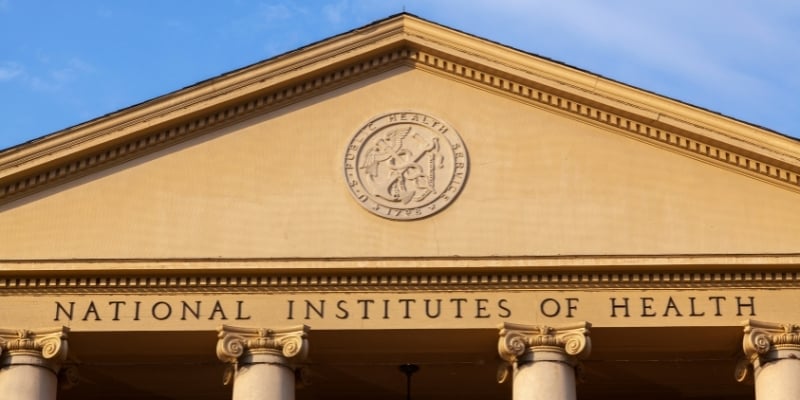As the Colorado School of Public Health-led modeling team considers potential trajectories of the COVID-19 pandemic, they base their forecasts on the levels of success of a few different containment strategies. Many cities and counties in Colorado have now implemented mask orders, businesses are required to maintain certain levels of social distancing as they reopen, and older adults are continuing to stay home. The state moved into the Safer-At-Home and Protect-Our-Neighbors phases while strengthening the fourth piece: aggressive case detection and containment through contact tracing.
The process is labor intensive. It involves working with those who test positive to help them remember everyone they had close contact with while they were infectious, then contacting each of those people to warn them that they might have been exposed to the virus, and provide resources and information about quarantine and testing. Those contacts also need to be followed up with for 14 days after their last exposure to see if they develop symptoms, and if they do, the process starts all over again. This relies on having large numbers of contact tracers trained in public health, the public health system, patient privacy, COVID transmission, symptoms, and interviewing.
In April, the Colorado Department of Public Health and Environment (CDPHE) worked to quickly scale up the contact tracing workforce in Colorado. They partnered with the Corporation for National and Community Service to hire more than 800 AmeriCorps and Senior Corps members to help Colorado's contact tracing efforts. CDPHE also reached out to the Colorado School of Public Health (ColoradoSPH) with a request to hire 20 students to work as contact tracers. These students were connected through the COVID-19 Student Response Initiative, a program that matches students with volunteer opportunities led by DrPH student Olivia Zarella under the mentorship of Professor of Epidemiology Lisa Miller.
Miller, a former state epidemiologist who worked for CDPHE for 24 years, was recently named the Interim Associate Dean for Public Health Practice at ColoradoSPH, a role that facilitates opportunities for students, faculty, and staff to engage in public health work in their communities. “I’m not usually big on titles,” Miller said. “But I think it’s important for the school to have a person with an identified role of public health practice. Especially during the pandemic, it’s important to have someone with the title.”
As the first group of 20 students finished up their training, CDPHE hired roughly 30 more. These positions greatly increase the state’s ability to conduct thorough contact tracing and work with local public health agencies. The Colorado public health system is decentralized, which means that most communicable disease follow-up work falls to local agencies. In May and early June, the state piloted conducting contact tracing and case investigation work for a few of these local agencies to develop systems of information sharing that ensure work isn’t being duplicated, shares what the state of an investigation is, or alerts the local agency if a case might be part of a larger outbreak and needs to be escalated. The program has been expanded in recent weeks and is now assisting 30 local public health agencies. Local public health agencies ask CDPHE for the level of help they need, whether that’s moving forward on their own, asking the state for technical assistance once the local agency has identified cases, or having the state take on most of the case investigation and contact tracing work.
These first 50 students are part of the COVID response epidemiology team at CDPHE. Students are assigned to one of five response teams, each covering a different area of the state. Regardless of what level of involvement a local agency requests from CDPHE, the students are always available when a surge in cases occurs.
For the students, it’s an opportunity to take what they’ve learned in the classroom and apply it in a way they never have before, according to Miller. “Actually having to apply what you learn in the classroom, and having to learn something new as you go provides so many learning opportunities.”
Those learning opportunities include training, about 40 hours of self-paced, online work, group webinar sessions, and mock interviews. In addition to the basics of COVID-19 and contact tracing, they’re also trained on mental health first aid and cultural competencies to help them work more effectively with people who are stressed, anxious, or ill.
But 50 students won’t be able to meet all the contact tracing and case investigation needs across the state. Forecasts suggest that as many as 1,200 contact tracers will be needed. The 800 Service Corps members brought on in April will help meet this need, and local public health agencies are scaling up their own contact tracing workforces to foster locally deployable pools of investigators. The Colorado Public Health Workforce Collaborative will work to support recruitment and training to assist local public health agencies in their response efforts.
The Colorado Public Health Workforce Collaborative
The Collaborative is a partnership of many local public health professionals working to develop strategic programs for use across the entire state. Their goal is to provide structure and support to local public health agencies by coordinating statewide initiatives that ensure an effective and efficient rollout of a contact tracing workforce, recruiting and training that workforce, and monitoring the rollout, as well as facilitating complementary COVID-19 containment activities.
Current members of the Colorado Public Health Workforce Collaborative include the Colorado Association of Local Public Health Officials (CALPHO), the Metro Denver Partnership for Health, the Colorado School of Public Health, the Colorado Department of Public Health and Environment (CDPHE), the Governor’s Innovation Response Team, the Colorado Medical Society, the Rocky Mountain Public Health Training Center, the Patient Navigation Training Collaborative, the Colorado Cross-Disability Coalition, the Colorado Hospital Association, the Colorado Health Institute, and the Colorado National Guard, all under the leadership of the Trailhead Institute. These members are broken into several workgroups to best leverage the perspectives and experiences of individuals and organizations.
As of now, most of the people participating in the Collaborative are doing so on a volunteer basis. “People understand the importance of the issue, and they’re stepping up,” said Chris Jones, communications workgroup manager and project coordinator in the Center for Public Health Practice at ColoradoSPH. Some funding has been made available for certain roles in the Collaborative, but the resource workgroup is trying to cement the resources to allow a network of contact tracers to exist for a year or more.
The Training Workgroup has largely been a collaboration between the Rocky Mountain Public Health Training Center (RMPHTC), the Patient Navigation Training Collaboration, and the Denver Prevention Training Center. The training reworks materials from other public health training programs offered by ColoradoSPH’s RMPHTC, Center for Public Health Practice, and Food Safety Center of Excellence and will provide three tracks—contact tracing, case investigation, and resource navigation.
As a starting point to the Collaborative’s work, a survey led by ColoradoSPH Adjunct Instructor Tatiane Santos, who works on the data workgroup, reached out to local agencies to assess needs for contact tracers as well as other support issues with plans to readminister the survey over time.
“Through the support of state agencies we hope to be helpful, but local agencies see the issues of an already strained public health system,” Jones said. “We’re trying to support them to respond and meet their needs.”
Another big focus of the Collaborative is communication and education. From the state’s perspective, it’s important to explain what contact tracing is. “We need to demystify what it is and how it can help contain COVID and prevent future spread. That’s part of what the students are doing,” said Nicole Comstock, deputy director of CDPHE’s Communicable Disease Branch.
“This only works if we have the trust of the community at large. It works hand in hand with people trusting us,” Jones agreed.
For public health officials and professionals, having that trust is critical to controlling the COVID-19 pandemic. Contact tracing has long been a pillar of public health, and a highly effective one at that. It’s credited with the eradication of smallpox by isolating infected individuals and immunizing their surrounding community. The same importance is generally ascribed to its role in the current pandemic, but it requires buy-in from local populations.
“This is the tool that will get our lives back to some semblance of normalcy,” Jones said. “This is how we get our economy back on track. This is how we stay safe while allowing things to reopen.”






